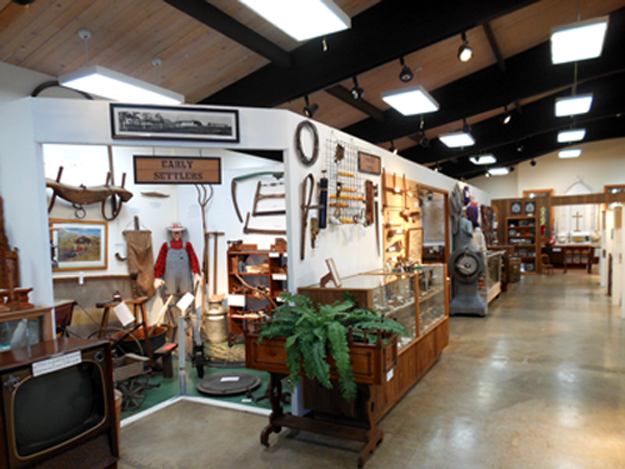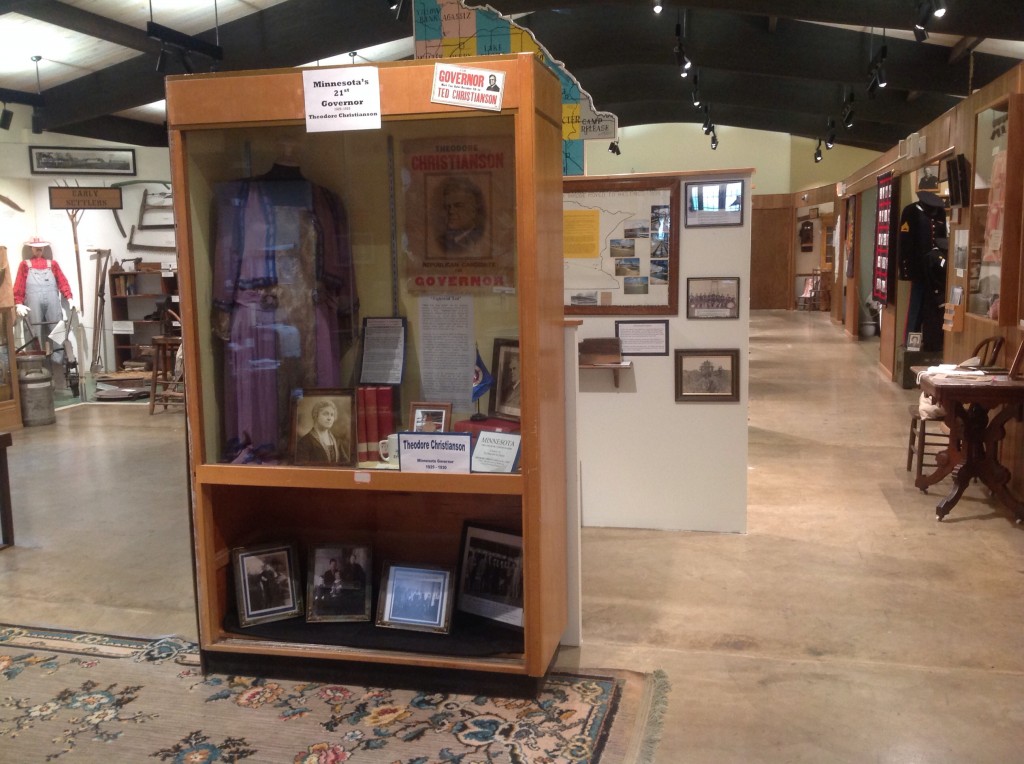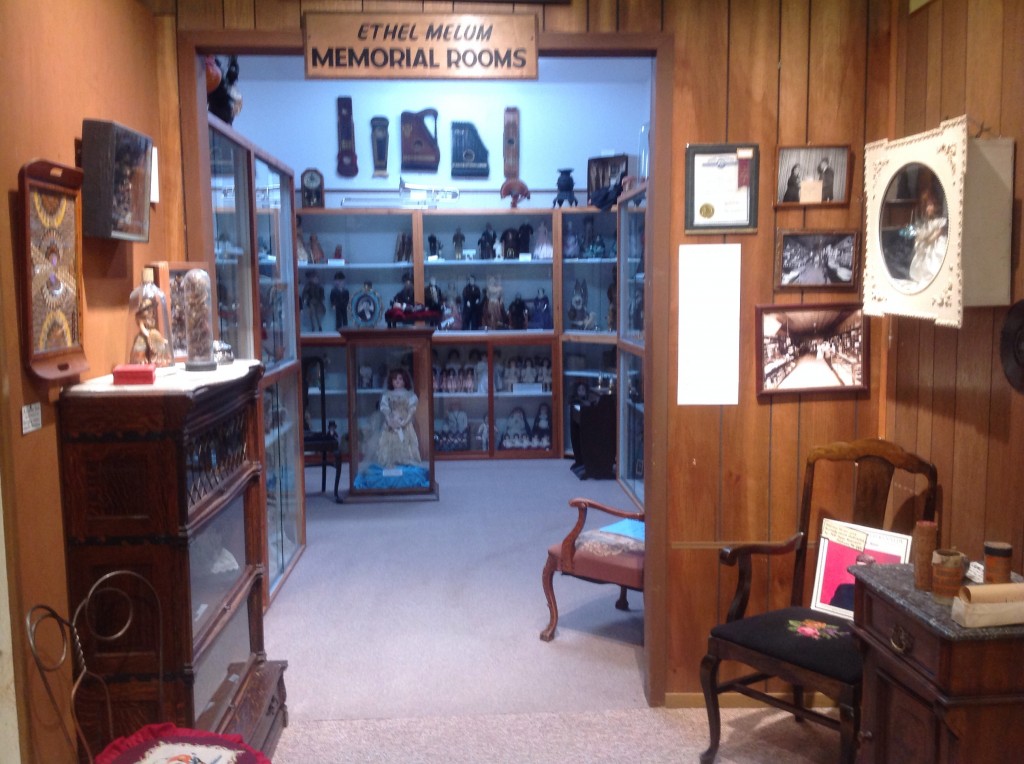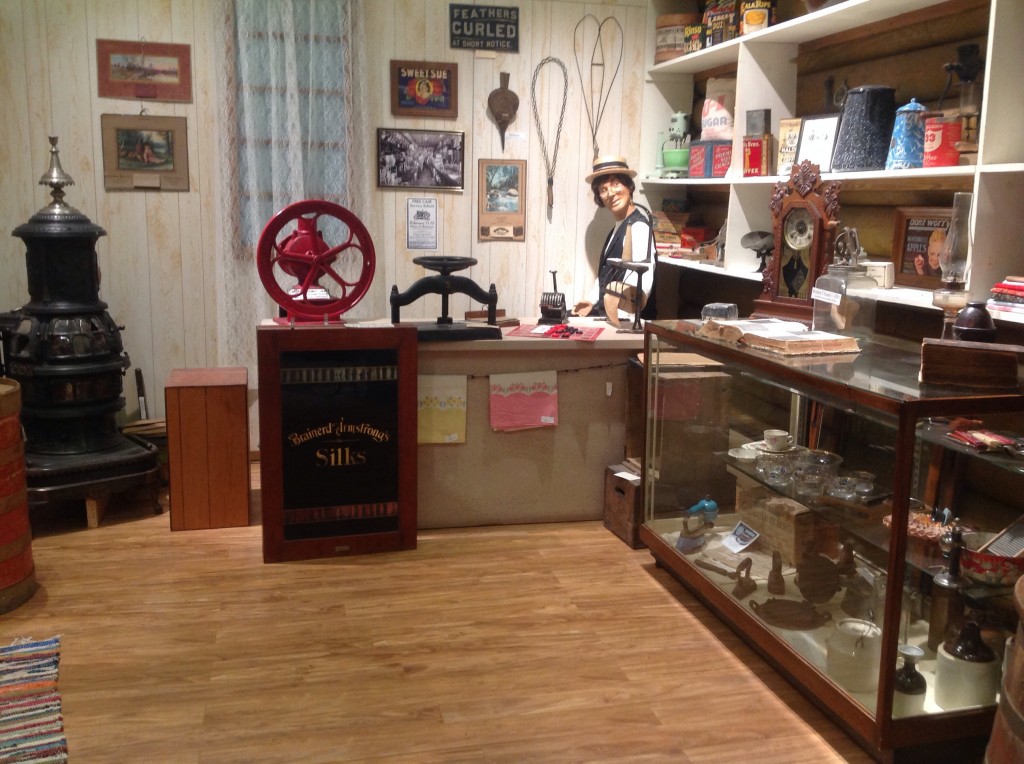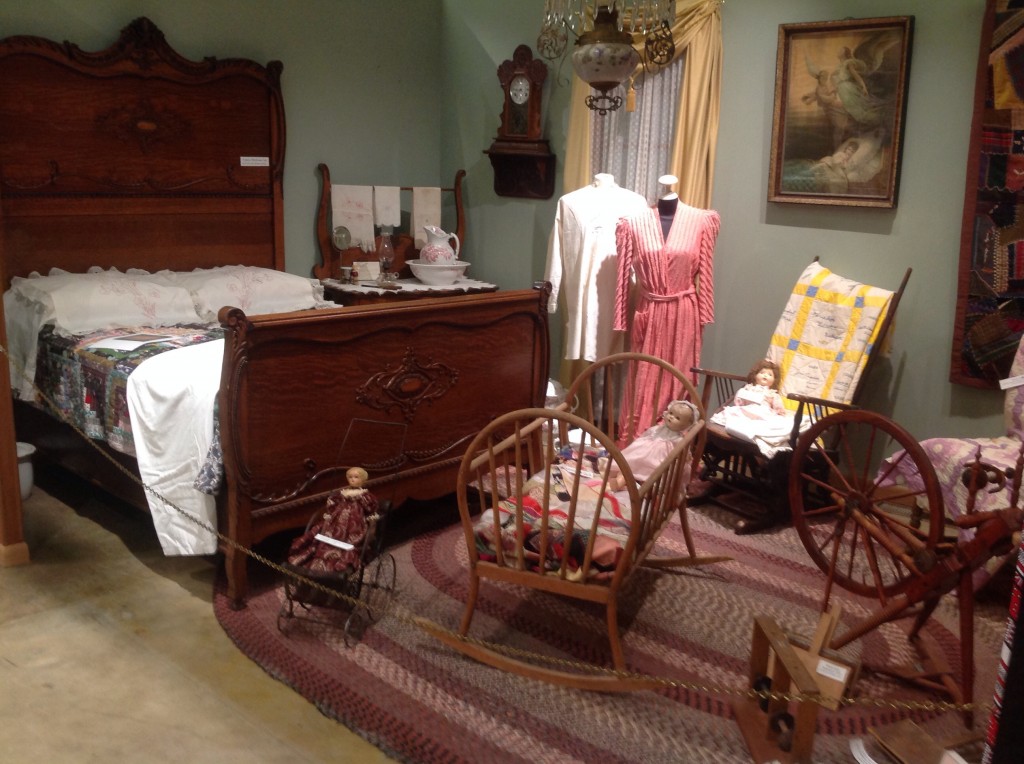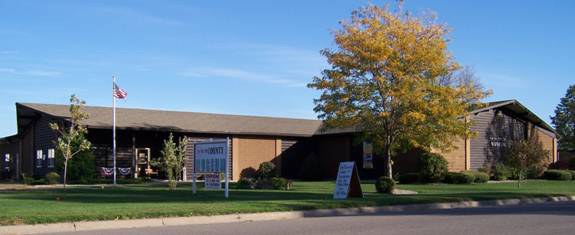Welcome to the home of the Lac qui Parle History Center.
Our mission is to represent visually and chronologically the priceless heritage of Lac qui Parle County, Minnesota, which includes Lac qui Parle State Park, and the towns of Bellingham, Boyd, Dawson, Louisburg, Madison, Marietta and Nassau. Lac qui Parle (locals pronounce it Lak kwa Par-uhl ) is a French translation of the native Dakota name, meaning “lake which speaks” and is a reference to a lake formed by the widening of the Minnesota River along the northeastern border of the county.
The museum campus consists of six separate buildings:
- a 9,000 sq. ft. educational museum and research library
- a furnished 1870’s log cabin
- a rural schoolhouse built in ca. 1887, equipped for that period through the early 1900’s
- an agricultural machinery, tools and early transportation exhibit building
- A 1933 Gas Station
- The Robert Bly Study where Madison’s native son, Minnesota’s First Poet Laureate, did much of his early writing
Exhibits include
- 294 personality dolls in enclosed display cases
- 3,000 piece salt & pepper shaker collection
- mounted big game, wildlife & flora & fauna exhibit
- military display of all wars from the Civil War to Desert Storm
- Township Row – contains 22 individual displays
- A “Century of Education” Schools display
- Strong genealogical holdings; index of newspaper obituaries; microfilm library of all LQP County newspapers plus some original newpaper archives.
Admission is free will donation.
PERMANENT EXHIBITS
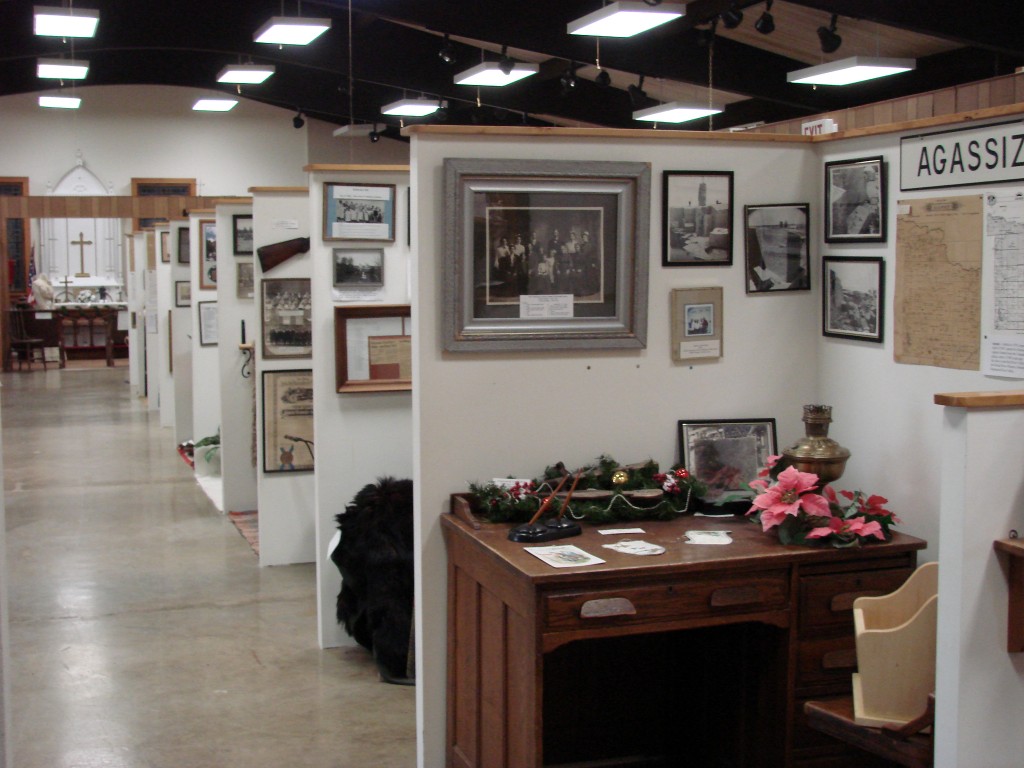 Township Row
22 individual displays
Township Row
22 individual displays
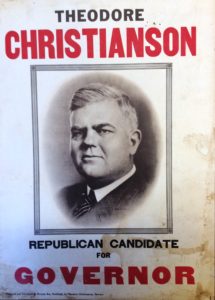
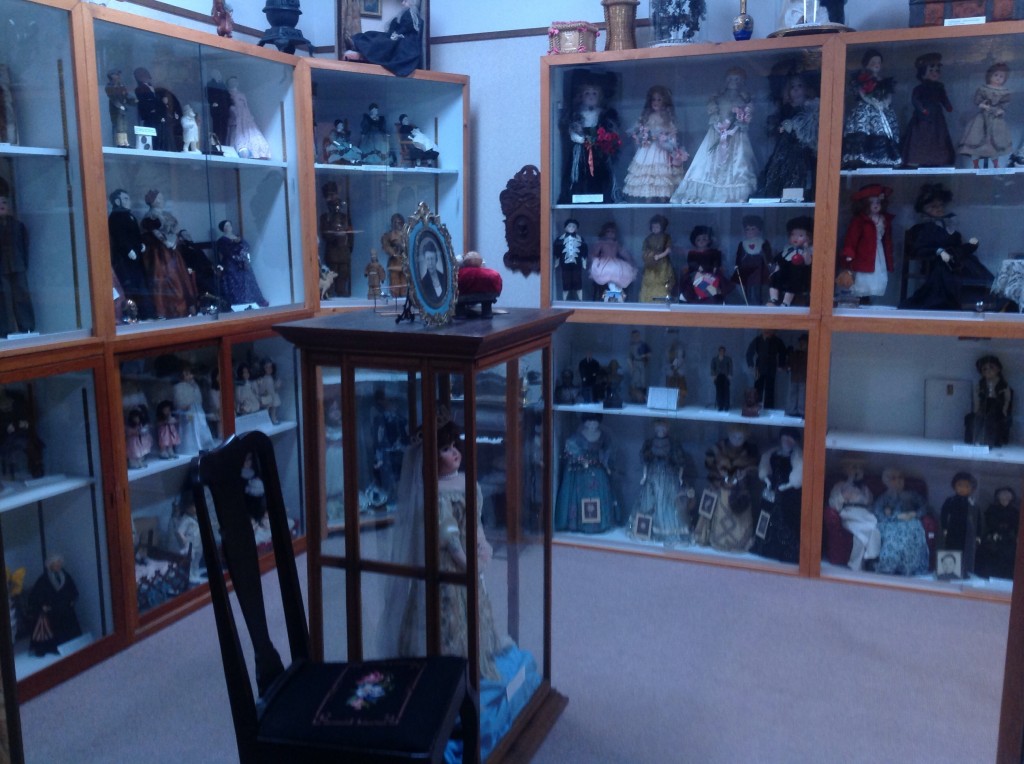
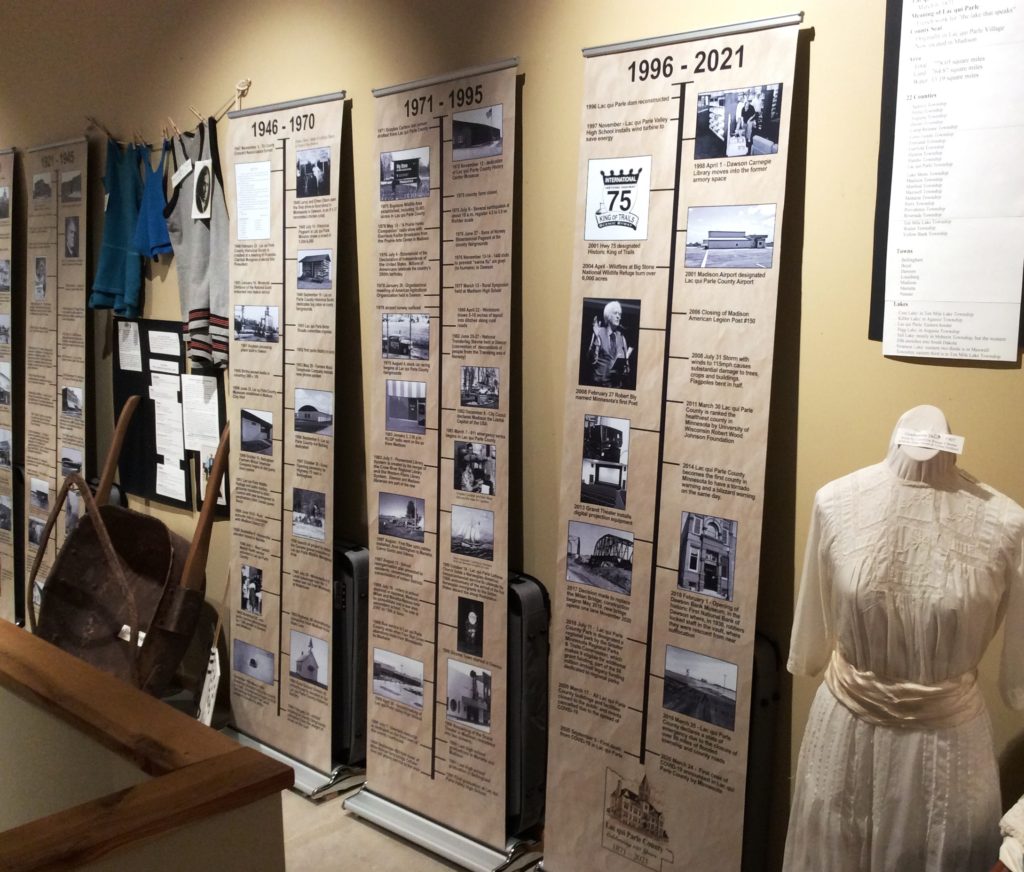
 “A Century of Education” schools display
“A Century of Education” schools display

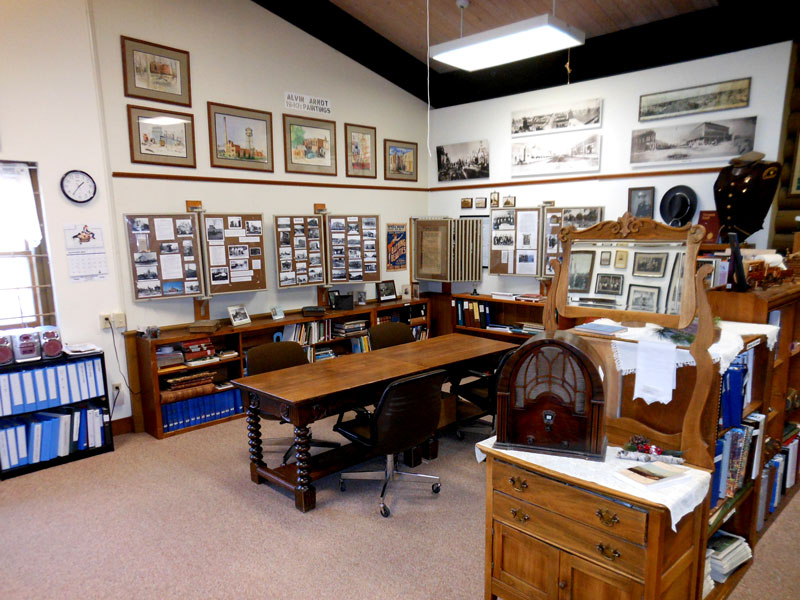 Strong genealogical holdings; index of newspaper obituaries;
microfilm library of all LQP County newspapers plus some original newpaper archives
Strong genealogical holdings; index of newspaper obituaries;
microfilm library of all LQP County newspapers plus some original newpaper archivesOUTSIDE EXHIBITS
Log Cabin
The log cabin is built mostly of large elm and cottonwood logs. Nels Hantho was the carpenter and builder and was helped by the owner, Halvor Flaa. Halvor lived there for several years. When it was no longer used as a home, it was the first schoolhouse of Hantho township in Section 16 and one of the first school buildings in the Lac qui Parle County. G.O. Kively first taught school in this building in 1880. The school was held in the Spring and there were no “grades.” Ole Stemsrud taught the second year, and his brother Hans was the schoolmaster the third year. The building served as schoolhouse until 1882, when the building became a granary.
The log cabin was “discovered” in 1935 on the John P. Dahl farm in Hantho township, it was being used as a granary and warehouse. Many people figured it was just a granary. It was donated and maintained by the Lac qui Parle County Historical Society and brought to the Lac qui Parle Fairgrounds in 1949. In 1972, the log cabin was moved to the Lac qui Parle County Historical Museum.
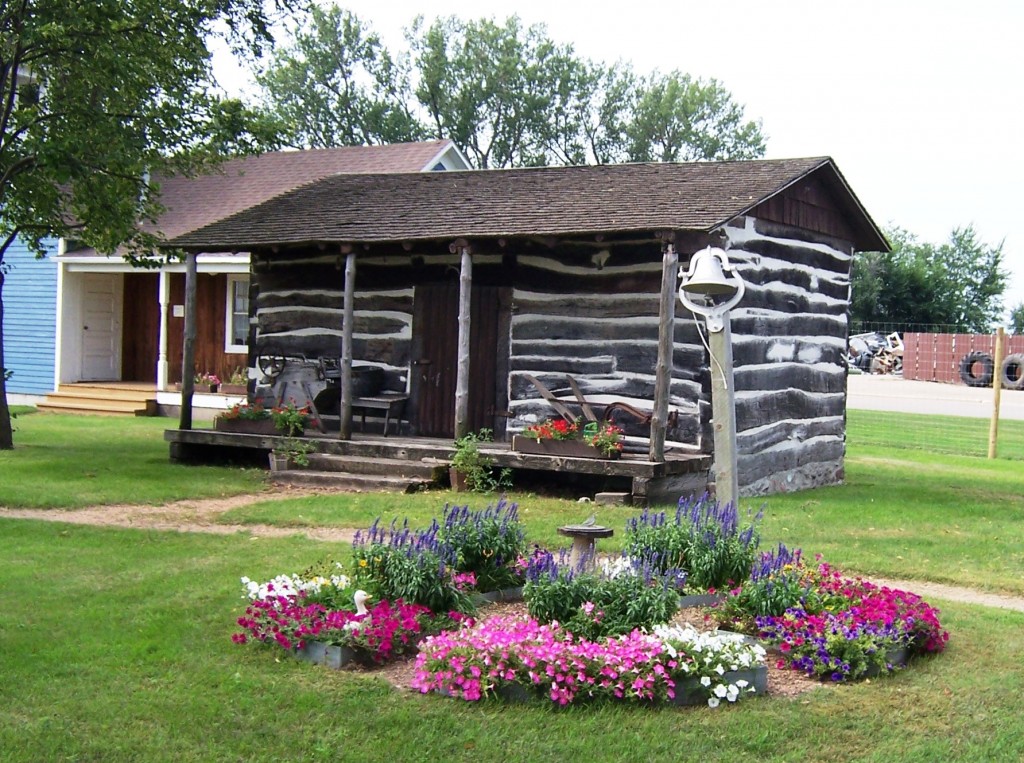
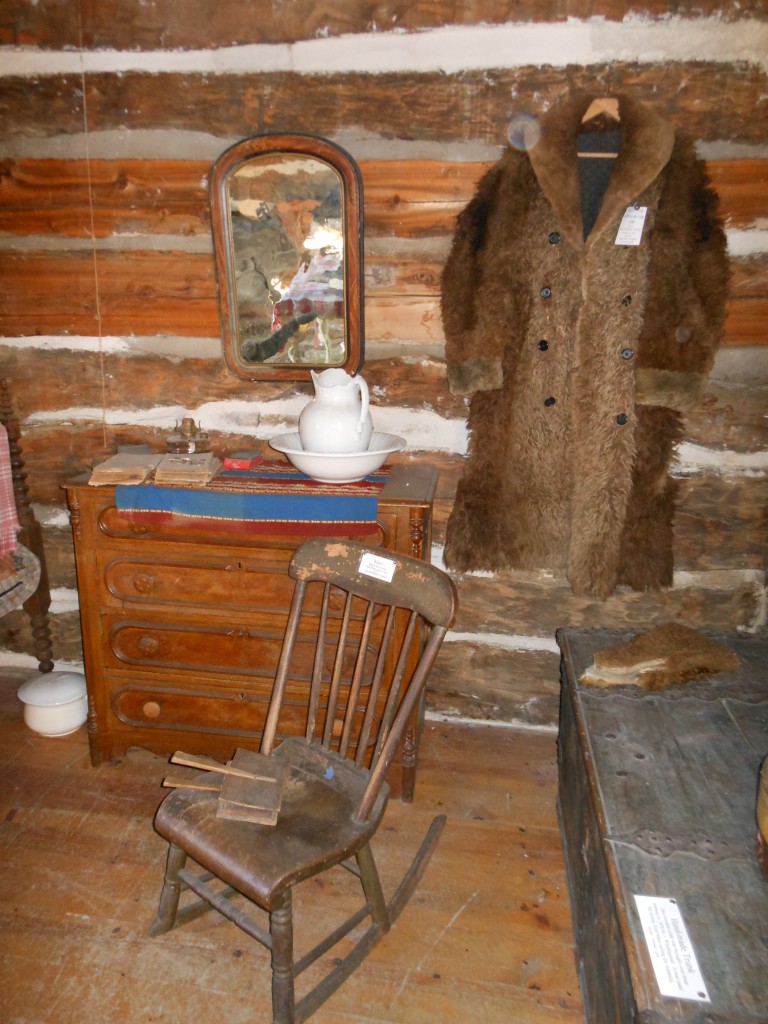
Schoolhouse – District 43 Cerro Gordo Township
District #43, Cerro Gordo Township, Section 5 was in operation from 1886 to 1955. It was called Pleasant View School. School terms in early days were only five or six months in session. This was due to farm work needs and for youth to attend planned parochial school. Water for drinking was carried from neighbors. Teachers had to light the fires, close down the fires at the end of school hours; shovel the paths to the schoolhouse and the ‘catalog’ supply little house. For cars being driven (by a few) corn cobs were used to place in the radiator, should they lose the plug that had come with the auto. The schoolhouse was moved here in 1962. Actual country school desks and books are there now to make it a real experience. Displays are constantly updated to keep it interesting for members and non-members that visit on a regular basis. Pictures on the wall have been of the 8th grade graduate, district country schools and the students at the schools.
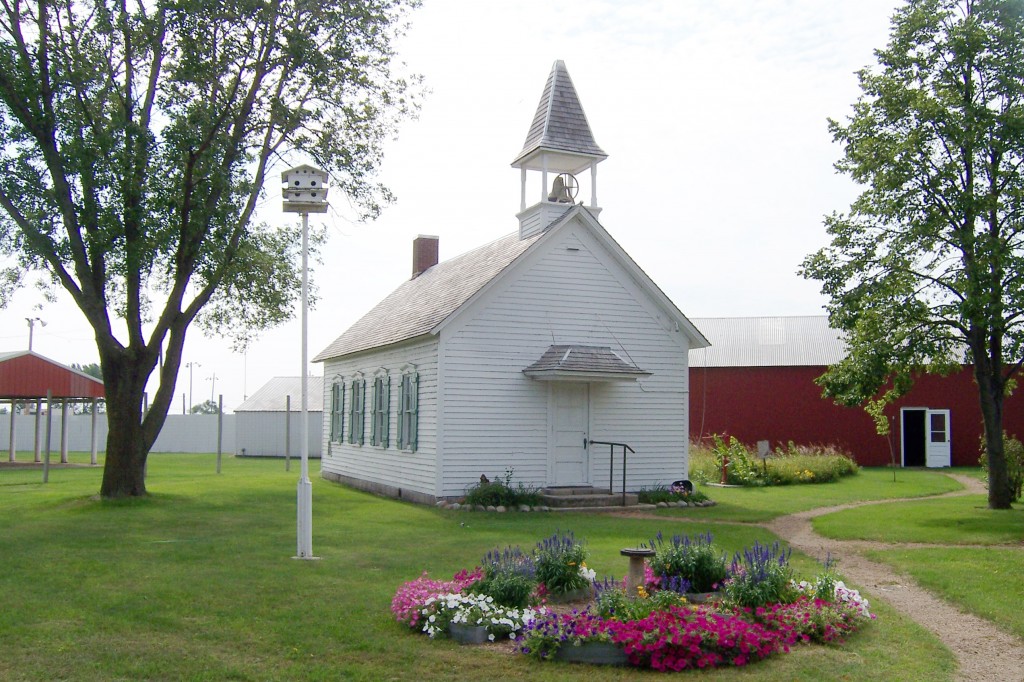
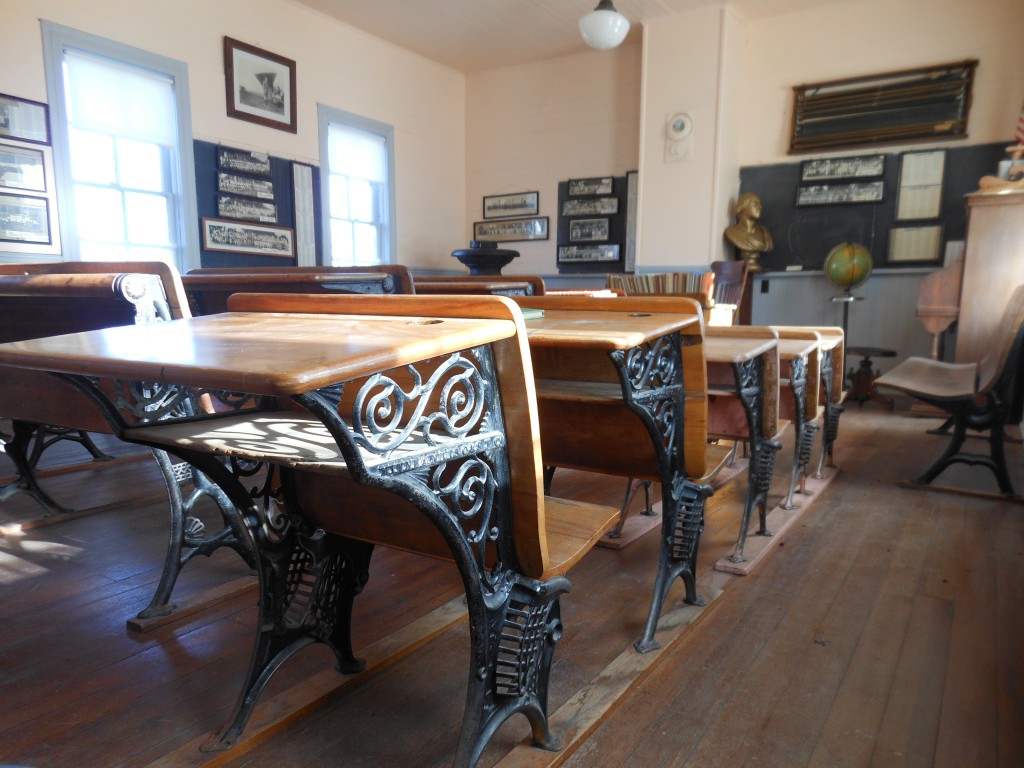 Rural schoolhouse built in ca. 1886, equipped for that period through the early 1900′s
Rural schoolhouse built in ca. 1886, equipped for that period through the early 1900′s
Machine Shed
The machine shed has numerous types of farming and blacksmith equipment, and old vehicles from the past. A mail wagon from the 1900’s is just an example of what the shed has to offer. Effort has been made to label each piece so there is not a question of what you are looking at. The log cabin, gas station, and outhouse are easy to look at and you may create a story of your own. Courthouse fence and beautiful gardens are an addition to the beauty of what the museum has to offer.
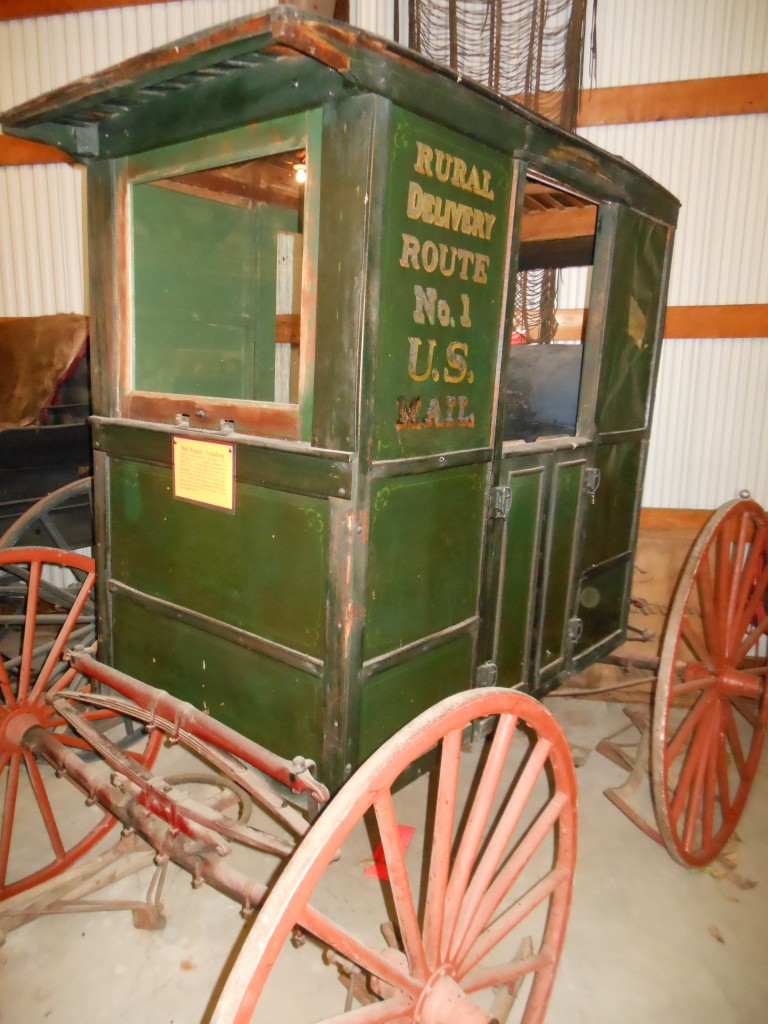
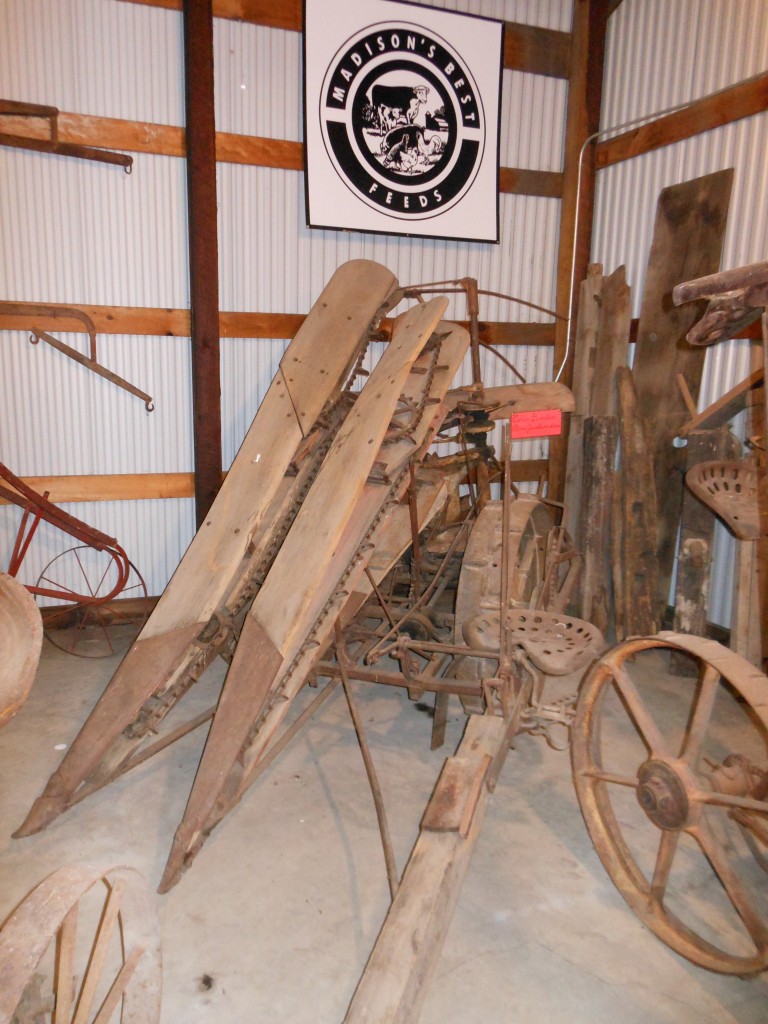 Agricultural machinery, tools and early transportation exhibit
Agricultural machinery, tools and early transportation exhibit
The Little Gas Station
Martin A. Johnson of Cerro Gordo Township originally constructed the building to be a gas station in 1933. Business suffered from the Depression so was moved to Watson in 1935 and a year later sold to George Breeze at MN Gas & Oil out of Willmar. It was moved to Madison in 1936 set on logs and pulled by the same 1926 Chevy truck and pushed from behind by a 1928 Chevy car that helped move it the other times. It set where the current Cenex Station is now on the corner of Highway 75 and Highway 40. Gasoline was 13 cents a gallon and they netted ½ cents per gallon.
Ownership changed and the gas station moved onto Mannie Arneson property further south on Highway 75. By 1957, it gradually fell into disrepair and Oscar O. Peterson bought it, cleaned it up, restored it and used it for a real estate office. Eventually, Oscar sold it back to Mannie Arneson, who eventually sold it to Stan Bjorgan who moved it out on his farm north of Madison. It remained there until 2001 when it was donated and moved to the Lac qui Parle Historical Society and Museum. Arvid Gollnick, Art Dove, Nd Stan Bjorgan moved it from the farm to where it stands now.
The gasoline pumps are from Haydenville and donated by Burdien Nenow of Madison.
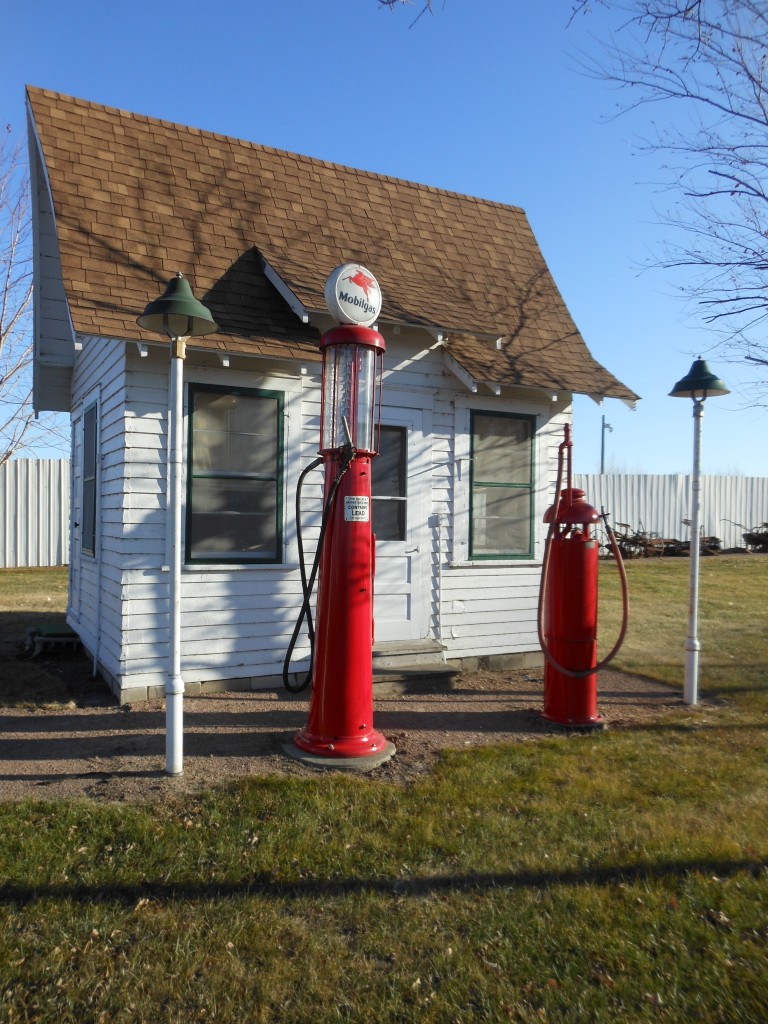 1933 Gas Station
1933 Gas Station
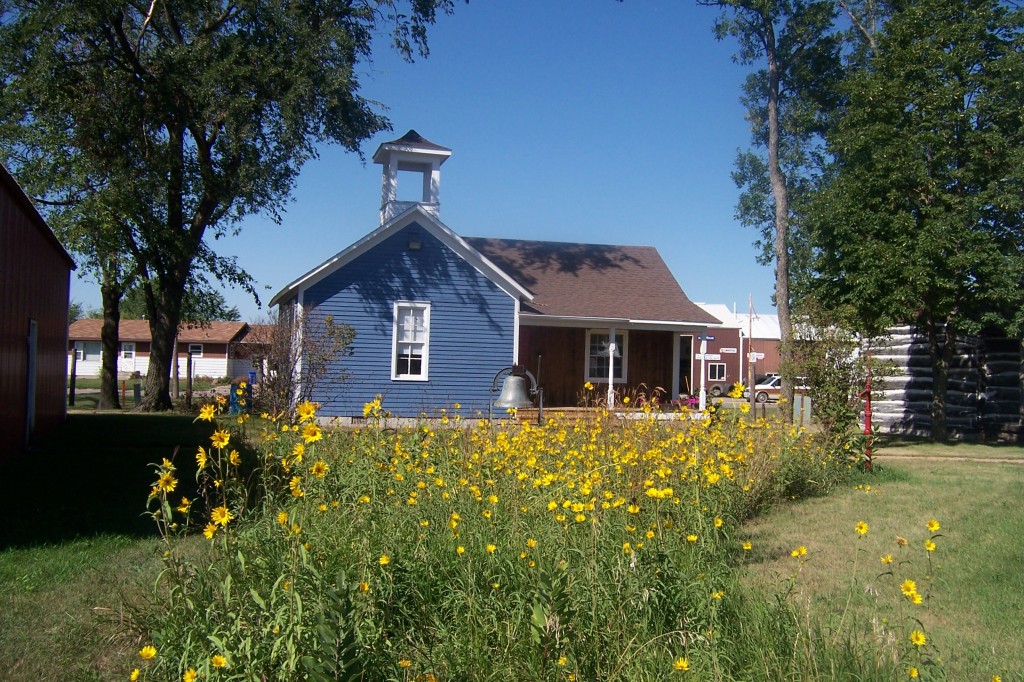 The Robert Bly Study where Madison’s native son, Minnesota’s First
Poet Laureate, did much of his early writing
The Robert Bly Study where Madison’s native son, Minnesota’s First
Poet Laureate, did much of his early writing
